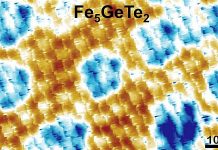
Scientists from the Department of Energy’s Ames National Laboratory have made an exciting discovery in a unique type of material called a topological insulator (TI).
These materials, which normally do not conduct electricity, can do so on their surface under certain conditions.
This means they have the potential to greatly improve how we use electricity and computers in the future, by reducing heat generation and energy loss.
Rob McQueeney, one of the researchers, says that finding and using these topological insulators isn’t easy.
They require a particular situation where the electronic bands within the material are “knotted up.” When a magnetic field is applied to a TI, only the very edges of its surface become metallic, meaning they can conduct electricity, while the rest of the surface becomes an insulator.
The researchers have been trying to create a type of TI where all the magnetic moments inside the material align in the same direction, a state known as ferromagnetism.
However, they found out that when defects are introduced into TIs, something unexpected happens: some of the ions within the material align with their neighbors, leading to a state known as antiferromagnetism. This decreases the overall magnetic power of the material.
There are two ways the scientists can add magnetism to a TI. One way is to insert a small number of magnetic ions into the material, like using a tiny bit of manganese with another material like bismuth telluride or antimony telluride.
The other way is to create a TI with a full layer of magnetic ions, like manganese-bismuth-tellurium (MnBi2Te4) and manganese-antimony-tellurium (MnSb2Te4). The second method is preferred because it provides a consistent layer of magnetism, unlike the random distribution of the first method.
The team decided to work with the first method for this project, which introduces randomly scattered magnetic defects. They wanted to understand how these defects affect the overall magnetism of the material.
To do this, they used a tool called neutron scattering. This involves passing a beam of neutrons through the sample material and collecting data on where and when the scattered neutrons hit a detector. This research method is quite complex and can only be carried out in a few places globally.
They conducted their experiment at the Spallation Neutron Source, a facility operated by the Oak Ridge National Laboratory.
The team found that despite the overall magnetic alignment of the material, some pairs of magnetic defects would align in opposite directions, reducing the material’s overall magnetism.
They discovered that the same kind of magnetic defects also occur in TIs that have a full layer of magnetic ions, like MnSb2Te4.
So, they concluded that these defects control the overall magnetism for both types of TIs. This surprising discovery can help scientists better understand how these materials work and how they can be improved for practical applications in the future.
The team’s research was published in a scientific paper titled “Role of Magnetic Defects in Tuning Ground States of Magnetic Topological Insulators” in the journal Advanced Materials.



